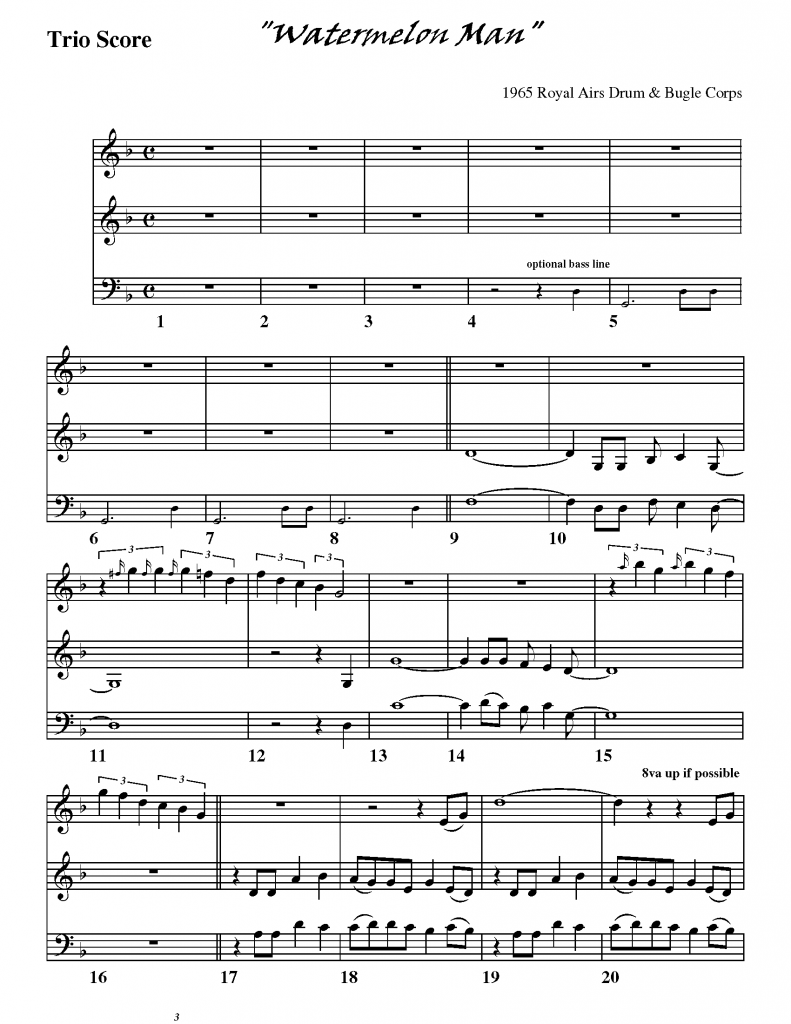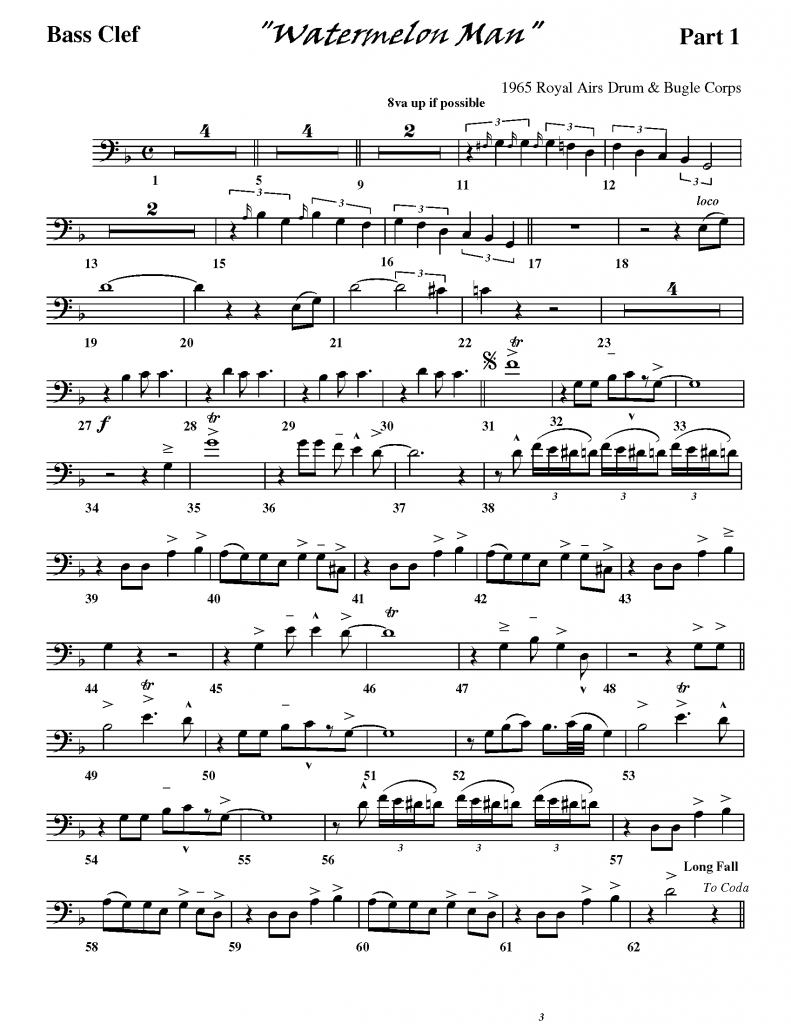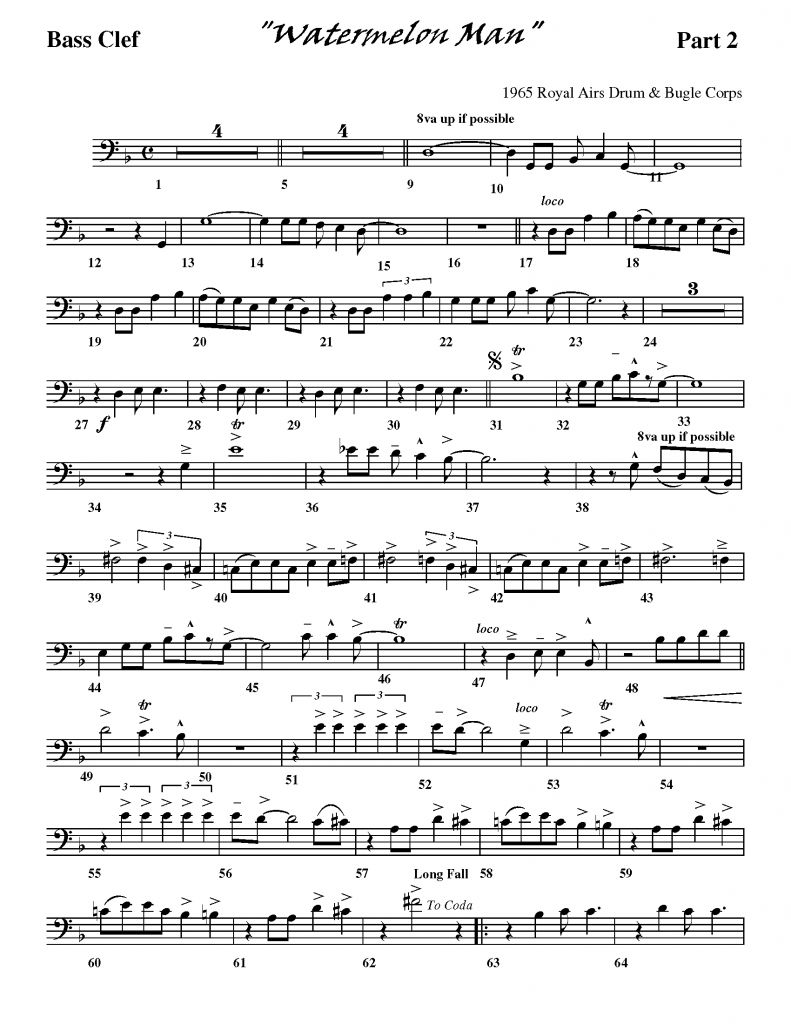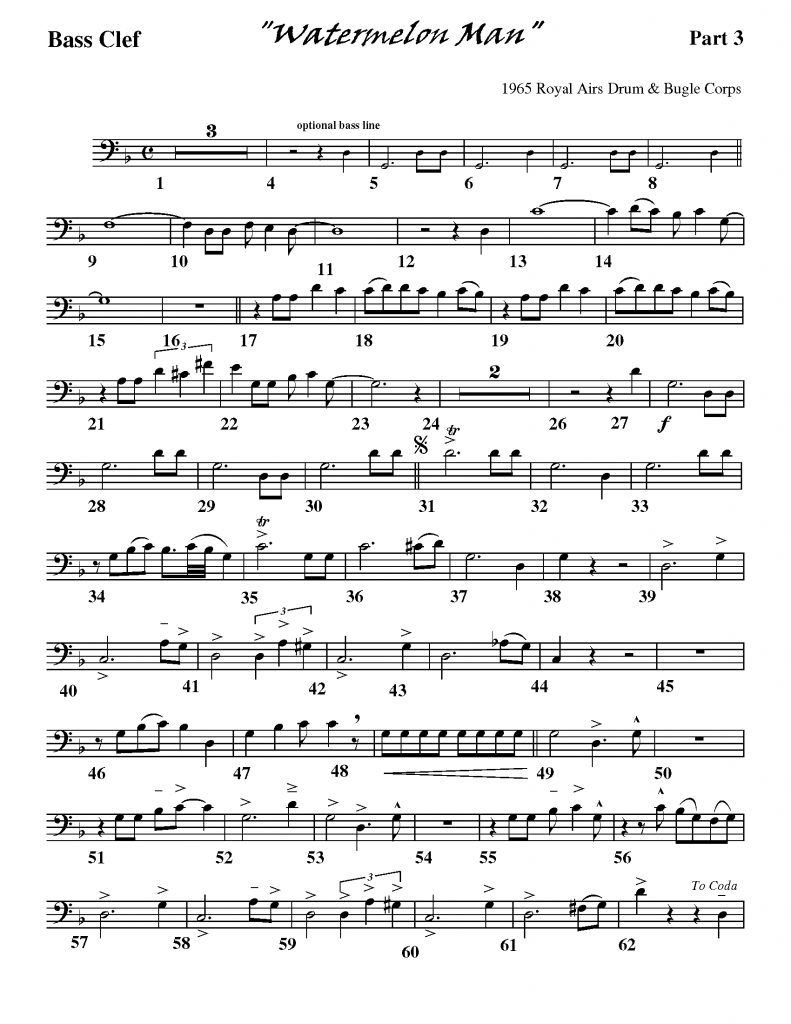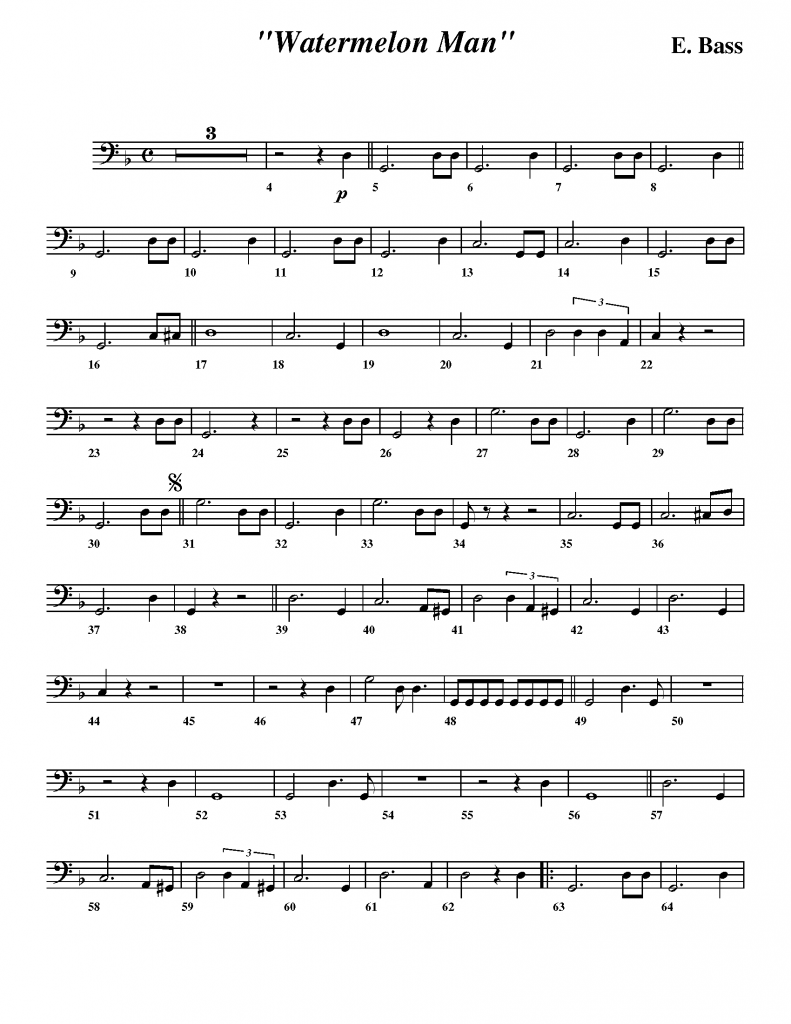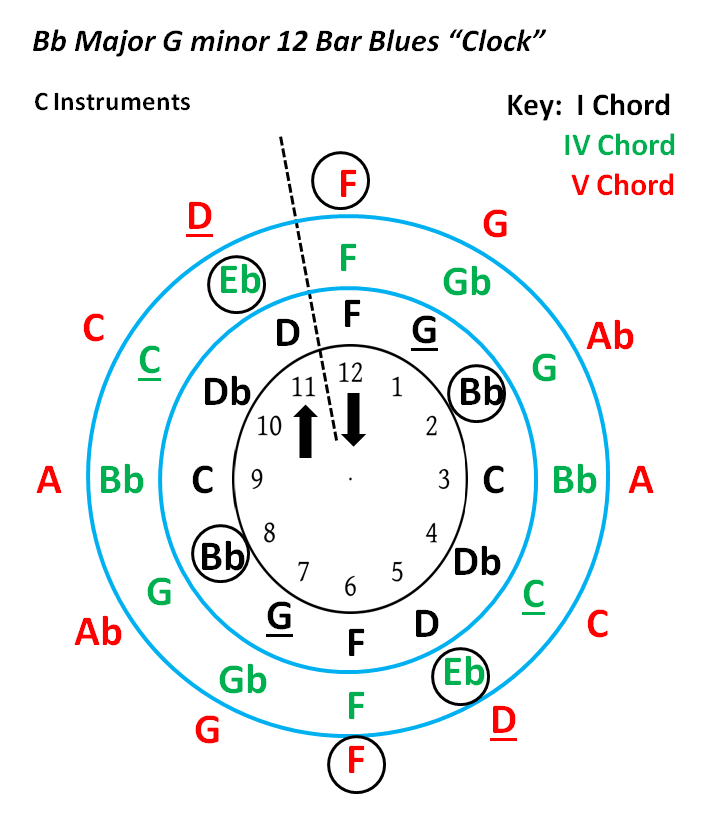Project Title: “Watermelon Man” G minor blues scale
Instructions: This latest assignment has the option of being played as a solo, duet, or trio. It is definitely the most challenging improvisation project yet and I tried to “tier” the parts, each with a different level of difficulty. One of the most famous recordings of “Watermelon Man” was done by Herbie Hancock. However, this particular arrangement was modified from Truman Crawford’s version written for the “Royal Airs” drum and bugle corps out of Chicago Illinois. Col. Crawford also established, directed, and arranged for “The President’s Own” United States Marine Corps for many years. The “Royal Airs” were a “power house” in drum corps back in the 60’s. In 1965 they dominated the national scene, winning almost every major drum corps title they competed for. The “Royal’s” horn line was typified with “screaming sopranos bugles” and a very “jazz heavy” style of show. What made them even more incredible is, “back in the day”, there were no “music majors” or even “band kids” in most drum corps horn lines. They were just kids “off the street” trying their best to play inferior piston/rotary bugles. Tru’s arrangement of “Watermelon Man” is a great example of the “Royal Airs”, “in your face” style and “persona” which made them always one of the top drum corps to be contended with.
After a short introduction, the song “kicks off” with a duet that also features an “answering / improvisation like” soloist. At bar # 27 it shifts into “high gear” and at bar 31, “pull out all of the stops”. The notes that are “trilled” indicate where the “bugle line” used jazz “shakes”. With band instruments, the brass could attempt the “shakes” while the woodwinds use “trills” instead (Examples: bar #’s 31 & 35). A lot of places in many parts are labeled “up 8va if possible” which means just that “IF POSSIBLE”. The Royal Airs had the “horses” to play the real high notes, but developing musicians should feel free to also play their parts “as written”. The initial “A” section finishes up at bar #62 (on a “Long Fall”) and also note this is where you will jump to the “coda” for the final segment. That is followed by a short 4 bar “diminuendo” leading into the “vamp for solos” section at measure # 67. Any of the three trio players (or all of them) can take a solo. The improvisation section is marked using “slash” notation, and in the “resource” MP3 is played twice. At bar # 92, you repeat back to the sign (bar 31) for our second visit to the “A” section. Finally, at the “coda”, the arrangement patiently does a long “Diminuendo to the end”, giving each player one last solo statement. When I did the project in Finale (transposing it from my original “Tech. Ensemble” version), for some reason it put the project into the key of “F” major (I have no idea why). Even though the song uses the G minor blues scale, all the notes turned out correct, so I just left it there.
There are a lot of MP3 Audio File options available. First, you have the full version and then just the trio, both along with drum set. The MP3 for each of the three parts are (along with drum set) can also be used for “individual practice” purposes. Finally, I initially arranged this version of “Watermelon Man” for Keyboard / Tech. Ensemble. I thought I would include it to demonstrate what can also be done with a collection of “non-acoustic” instruments.
Three Part Score:
All Band Instruments 1st Part:
